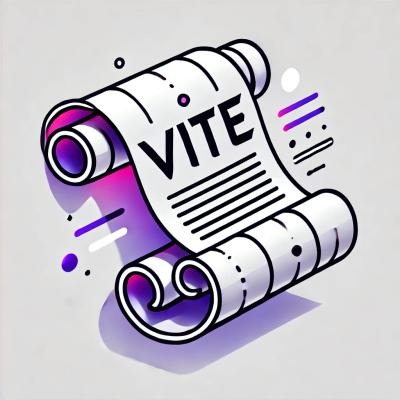
Research
Security News
Malicious npm Packages Target BSC and Ethereum to Drain Crypto Wallets
Socket uncovered four malicious npm packages that exfiltrate up to 85% of a victim’s Ethereum or BSC wallet using obfuscated JavaScript.
three-loader-3dtiles
Advanced tools
Demos — Usage — Roadmap — Contributing — Docs — Alternatives
This is a Three.js loader module for handling OGC 3D Tiles, created by Cesium. It currently supports the two main formats:
Internally, the loader uses the loaders.gl library, which is part of the vis.gl platform, openly governed by the Urban Computing Foundation. Cesium has worked closely with loaders.gl to create a platform-independent implementation of their 3D Tiles viewer.
Development of this library started at The New York Times R&D as an effort to create a clean bridge between the 3D Tiles specification and the widely used 3D library Three.js. The library helps us deliver massive 3D and Geographical journalism to desktops and mobile readers alike. From Reporting to Teleporting!
Here is a simple example using the Loader3DTiles module to view a tileset.json containing a 3d tile hierarchy.
import {
Scene,
PerspectiveCamera,
WebGLRenderer,
Clock
} from 'three'
import { Loader3DTiles } from 'three-loader-3dtiles';
const scene = new Scene()
const camera = new PerspectiveCamera()
const renderer = new WebGLRenderer()
const clock = new Clock()
renderer.setSize(window.innerWidth, window.innerHeight)
document.body.appendChild(renderer.domElement)
let tilesRuntime = null;
async function loadTileset() {
const result = await Loader3DTiles.load(
url: 'https://<TILESET URL>/tileset.json',
viewport: {
width: window.innerWidth,
height: window.innerHeight,
devicePixelRatio: window.devicePixelRatio
}
options: {
dracoDecoderPath: 'https://cdn.jsdelivr.net/npm/three@0.160.0/examples/jsm/libs/draco',
basisTranscoderPath: 'https://cdn.jsdelivr.net/npm/three@0.160.0/examples/jsm/libs/basis',
}
)
const {model, runtime} = result
tilesRuntime = runtime
scene.add(model)
}
function render() {
const dt = clock.getDelta()
if (tilesRuntime) {
tilesRuntime.update(dt, window.innerHeight, camera)
}
renderer.render(scene, camera)
window.requestAnimationFrame(render)
}
loadTileset()
render()
The library supports three.js r160 and uses its GLTF, Draco, and KTX2/Basis loaders.
Refer to the browserslist field in package.json for target browsers.
Use an importmap to import the dependencies from the npm. See here for a full example.
index.html<script type="importmap">
{
"imports": {
"three": "https://unpkg.com/three@0.160.0/build/three.module.js",
"three/examples/jsm/": "https://unpkg.com/three@0.160.0/examples/jsm/",
"three-loader-3dtiles" : "https://unpkg.com/three-loader-3dtiles/dist/lib/three-loader-3dtiles.js"
}
}
</script>
<script src='index.js' type='module'>
index.jsimport { Scene, PerspectiveCamera } from 'three';
import { Loader3DTiles } from 'three-loader-3dtiles';
If you use a build system such as Webpack / Vite / Rollup etc, you should also install the library along with three.js from npm:
npm install -s three three-loader-3dtiles
The application script would be the same as in the ES Module example (when using importmap).
See here for a complete webpack example.
Refer to our dedicated A-Frame component: aframe-loader-3dtiles-component.
Refer to examples/r3f.
The 3D Tiles Next specification is in the works, with some of the features already supported in loaders.gl. Supporting the new extensions opens up possibilities for new applications.
Implementing the Skip traversal mechanism could greatly improve performance of b3dm (mesh) tiles, but requires a shader/Stencil buffer-based implementation which manually manges Z-culling. This is a very wanted feature and contributions would be greatly appreciated.
Refer to CONTRIBUTING.MD for general contribution instructions.
The library is built using rollup. To run a simple development server type:
npm run dev
It is also possible to develop the library while developing loaders.gl. Just clone the source of loaders.gl and run:
LOADERS_GL_SRC=<path to loaders.gl> npm run dev
To build the library run:
npm run build
To build the production minified version run:
npm run build:production
And to build the API documentation run:
npm run docs
A rudimentary test spec is available at ./test. To run it type:
npm run test
To our knowledge, this is the only loaders.gl-based Three.js library, but there are several implementations of 3D Tiles for Three.js. Notable examples:
This repository is maintained by the Research & Development team at The New York Times and is provided as-is for your own use. For more information about R&D at the Times visit rd.nytimes.com
v1.2.7
Viewport structure required on initial load and updated via the setViewport() function. Contains width, height, and devicePixelRatio.setRenderer() for setting the renderer after the first load if needed.FAQs
A 3D Tiles loader for Three.js
The npm package three-loader-3dtiles receives a total of 1,523 weekly downloads. As such, three-loader-3dtiles popularity was classified as popular.
We found that three-loader-3dtiles demonstrated a healthy version release cadence and project activity because the last version was released less than a year ago. It has 0 open source maintainers collaborating on the project.
Did you know?

Socket for GitHub automatically highlights issues in each pull request and monitors the health of all your open source dependencies. Discover the contents of your packages and block harmful activity before you install or update your dependencies.

Research
Security News
Socket uncovered four malicious npm packages that exfiltrate up to 85% of a victim’s Ethereum or BSC wallet using obfuscated JavaScript.

Security News
TC39 advances 9 JavaScript proposals, including Array.fromAsync, Error.isError, and Explicit Resource Management, which are now headed into the ECMAScript spec.

Security News
Vite releases Rolldown-Vite, a Rust-based bundler preview offering faster builds and lower memory usage as a drop-in replacement for Vite.